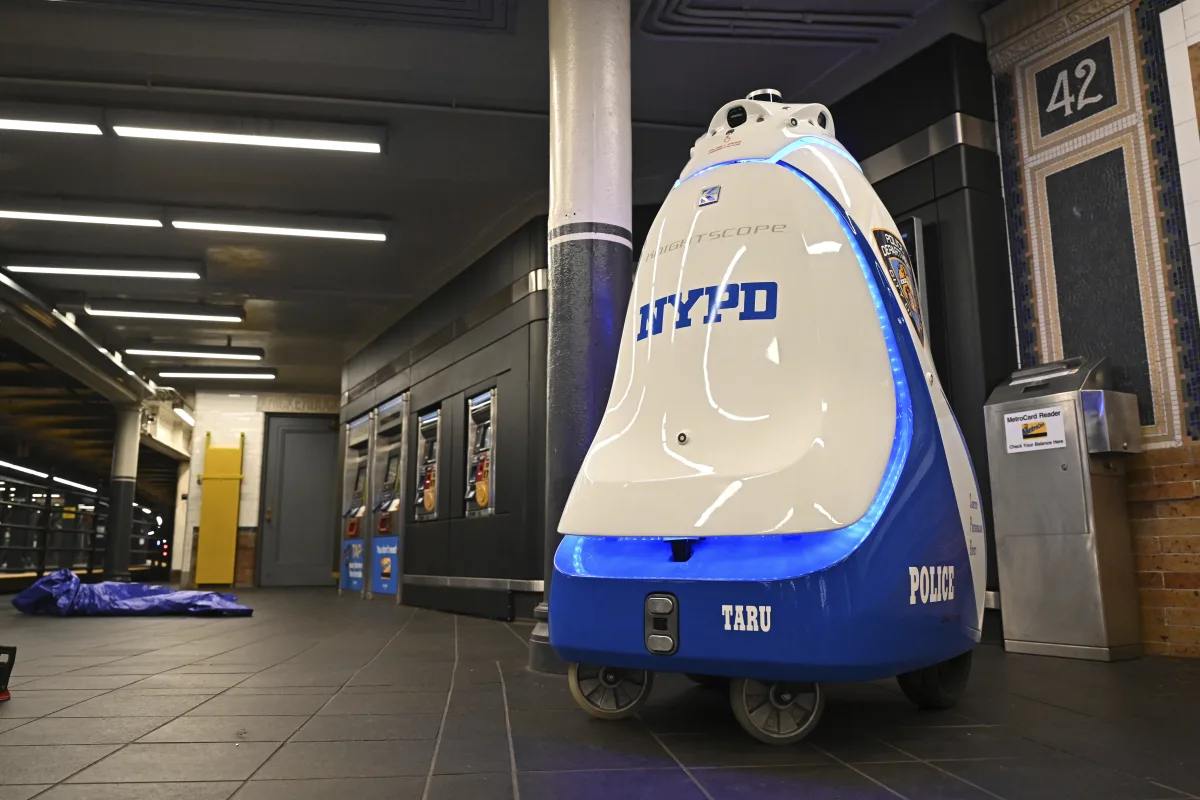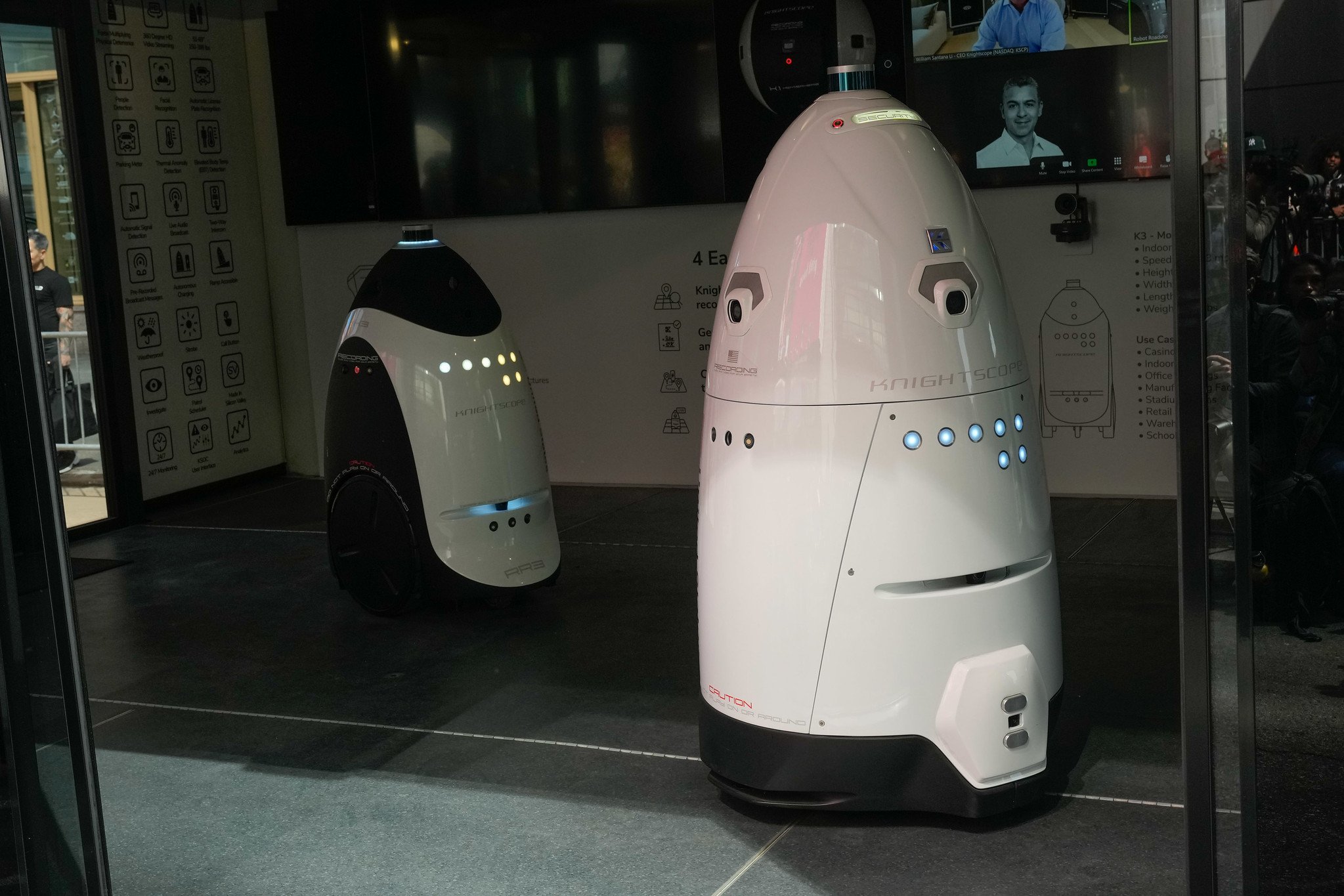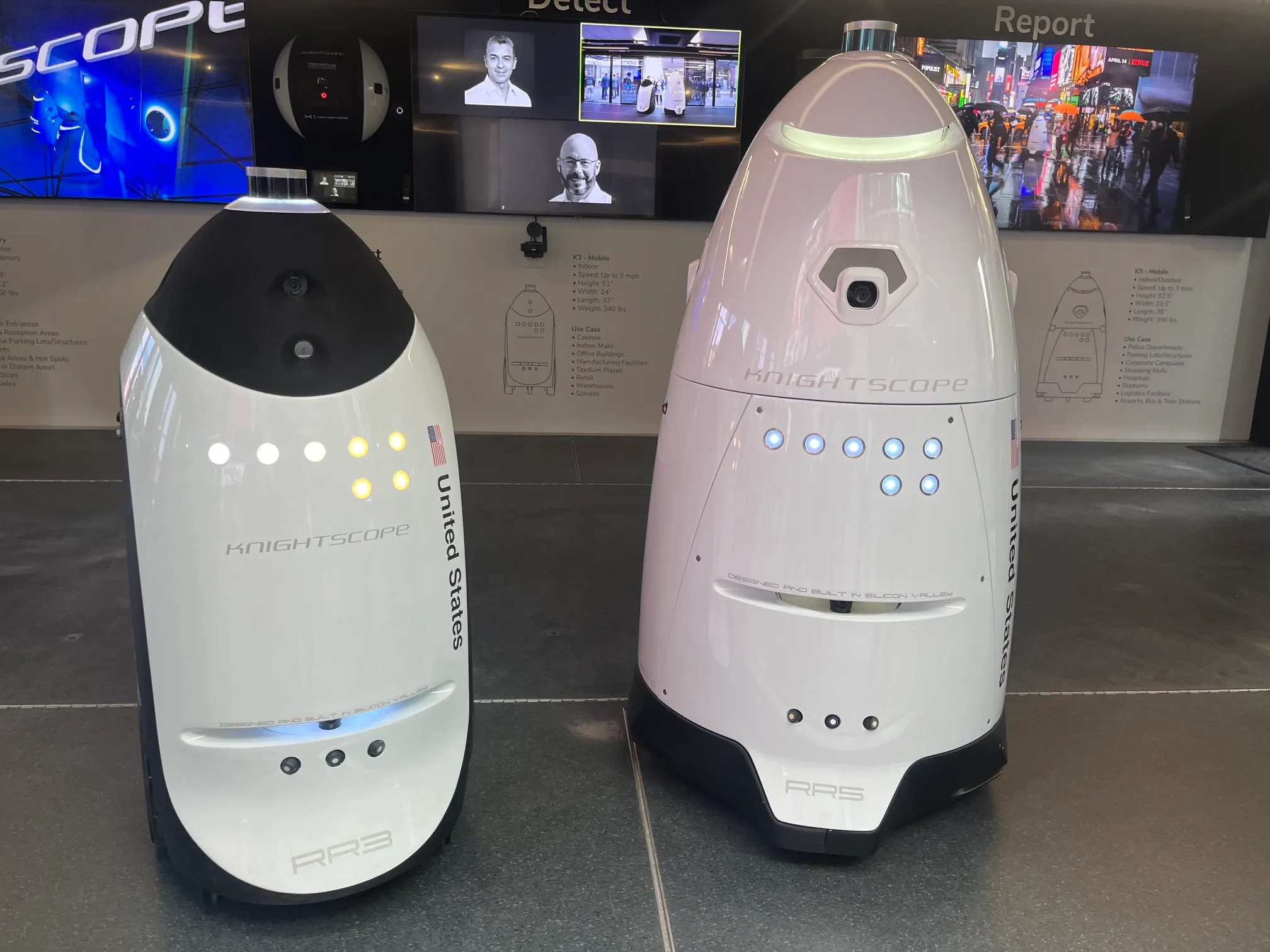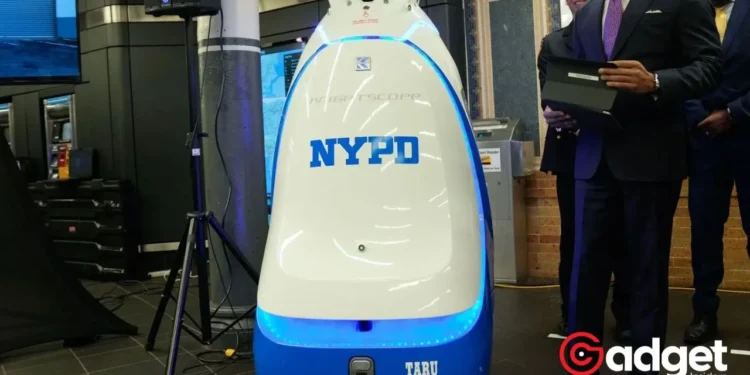In the bustling heart of New York City, a futuristic vision briefly came to life in the form of the K-5 security robot. Deployed in the iconic Times Square subway station, K-5’s introduction was a blend of innovation and controversy.
Designed to resemble a cross between the beloved Star Wars saga and the practicality of a Smart Car, this robot was more than just a security measure; it was a glimpse into a high-tech future for urban safety.
The Challenges Behind the Cutting-Edge Tech
Despite its initial promise, K-5’s tenure in the subway system was short-lived, lasting just over five months. According to AFP, the decision to remove K-5 from service was influenced by various operational challenges.
While the robot was equipped with multiple cameras and a helpful button for commuters, it struggled with frequent charging breaks, the requirement of human officer accompaniment, and an inability to navigate stairs.
A New York Police Department spokesperson reflected on the K-5’s journey, acknowledging its completion of a pilot deployment. This marked the end of a significant chapter in the city’s exploration of technological solutions for transit security.

Voices of Skepticism and Concern
Albert Fox Cahn, the executive director of the Surveillance Technology Oversight Project, didn’t mince words about the robot’s effectiveness, referring to it humorously as “a trash can on wheels.”
Critics like Cahn questioned the allocation of resources to such technologies, particularly in light of budget cuts across city agencies and a general decrease in major crimes.

New York City Subway Safety: Mayor Eric Adams’ Tech-Forward Stance on Crime Prevention
In the backdrop of the K-5’s story is New York City Mayor Eric Adams’ advocacy for integrating technology into crime-fighting strategies. As a former police officer, Mayor Adams has shown a keen interest in using advanced technology to bolster city safety.
This tech-centric approach has seen the introduction of various tools, including a $74,000 robotic dog equipped with cameras and a two-way communication system, drones, facial recognition cameras, and the Starchase GPS for tracking vehicles.
Why did New York City retire its controversial security robot?https://t.co/4lFhgjIjS2
— Tech Times (@TechTimes_News) February 3, 2024
Balancing Innovation with Practicality
While Mayor Adams credits these technologies for contributing to the city’s declining crime rate, voices like Cahn express concern over the ongoing financial commitment to such high-tech solutions.
“But now crime is plummeting across the country, including cities that banned these dystopian devices. If we don’t have money to keep the library doors open, we don’t have cash for creepy robots,” said Cahn, as AFP reported.

As New York City bids farewell to K-5, the saga serves as a poignant reminder of the delicate balance between embracing futuristic visions and addressing practical realities. The city’s journey with K-5, though brief, opens up broader conversations about the role of technology in public safety and the importance of adapting innovations to the complex dynamics of urban life.










